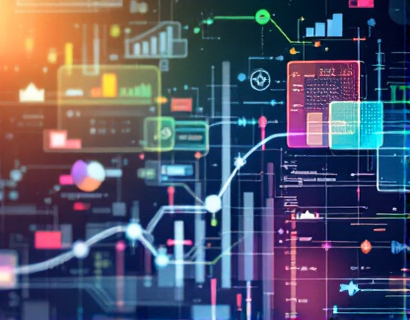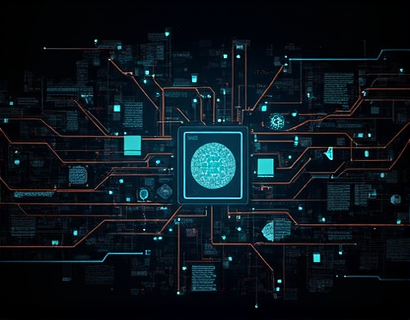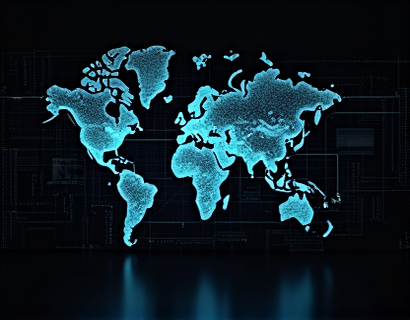AI-Driven Mental Health Guide: Revolutionizing Access to Specialist Chatbot Services
The landscape of mental health support is rapidly evolving with the integration of artificial intelligence (AI) technologies. One of the most promising developments in this field is the creation of AI-driven chatbots designed to provide specialized insights into mental health services and industry trends. These chatbots are tailored to ensure accurate and safe content for a diverse audience, including children, students, educators, and healthcare professionals. This article delves into the features and benefits of such innovative platforms, focusing on how they can enhance user engagement and provide reliable knowledge.
Understanding AI-Driven Mental Health Chatbots
AI-driven mental health chatbots are sophisticated tools that leverage natural language processing (NLP) and machine learning algorithms to understand and respond to user queries. These chatbots are programmed to offer specialized information about mental health services, including therapist directories, treatment options, and industry insights. Unlike general chatbots, these platforms are specifically designed to address the nuanced and sensitive nature of mental health topics.
Key Features of AI-Driven Mental Health Chatbots
- Specialized Insights: These chatbots provide in-depth information on various mental health conditions, treatment methods, and therapeutic approaches. They can offer detailed explanations of disorders such as depression, anxiety, and PTSD, as well as the latest research and clinical practices.
- Personalized Recommendations: By analyzing user inputs and preferences, AI chatbots can suggest personalized resources and support options. This includes recommending local therapists, support groups, and online resources tailored to the user's specific needs.
- 24/7 Availability: Unlike human services that may have limited hours, AI chatbots are available around the clock, ensuring that users can access support whenever they need it. This is particularly beneficial for individuals in crisis or those requiring immediate assistance.
- Language and Cultural Sensitivity: Advanced chatbots can be programmed to understand and respond in multiple languages and cultural contexts, making mental health resources more accessible to a global audience.
Ensuring Content Verification and Safety
One of the most critical aspects of AI-driven mental health chatbots is the commitment to content verification and safety. Given the sensitive nature of mental health information, it is essential that the content provided is accurate, up-to-date, and safe for all users. Here are some measures these platforms implement to ensure reliability and security:
First, the information provided by AI chatbots is rigorously vetted by a team of mental health professionals and experts. This ensures that the data is not only accurate but also aligned with the latest clinical guidelines and research findings. Regular updates and reviews are conducted to keep the content current and relevant.
Second, these chatbots are designed with user privacy and data protection in mind. They comply with strict data governance standards, ensuring that user information is securely stored and processed. Users can trust that their personal details and mental health inquiries are handled with the utmost confidentiality.
Third, the platforms are specifically designed to be safe for children and students. This includes implementing age-appropriate language, avoiding complex medical jargon, and providing content that is both educational and engaging. For younger users, the chatbot can offer simplified explanations and interactive elements to enhance understanding and engagement.
Benefits for Diverse Audiences
The benefits of AI-driven mental health chatbots extend across various demographics, making mental health support more accessible and inclusive:
For Children and Students
Children and students often face unique mental health challenges, from academic stress to social pressures. AI chatbots can provide a safe and non-judgmental space for them to express their feelings and seek advice. The chatbot can offer age-appropriate resources, such as coping strategies, relaxation techniques, and information on school-based support services. By normalizing mental health discussions, these chatbots help reduce stigma and encourage young people to seek help when needed.
For Mental Health Enthusiasts and Educators
Mental health enthusiasts and educators can benefit from the in-depth knowledge and resources provided by AI chatbots. These platforms can offer insights into the latest trends in mental health research, educational tools for teaching mental health in schools, and professional development opportunities. Educators can use the chatbot to find evidence-based materials and best practices for supporting students' mental well-being.
For Healthcare Professionals
Healthcare professionals, including therapists, psychologists, and counselors, can leverage AI chatbots to stay updated on industry developments and best practices. The chatbot can provide access to continuing education courses, research articles, and case studies. Additionally, healthcare professionals can use the chatbot to refer patients to specialized services and resources, enhancing the quality of care they provide.
Enhancing User Engagement and Education
AI-driven mental health chatbots are not just informational tools; they are designed to engage users and foster a deeper understanding of mental health topics. Here are some ways these chatbots enhance user engagement and education:
First, interactive features such as quizzes, polls, and guided exercises can make learning about mental health more engaging and interactive. For example, a user might participate in a stress management quiz that provides personalized tips and resources based on their responses.
Second, the chatbot can offer storytelling and real-life examples to illustrate mental health concepts. By sharing relatable stories and case studies, users can better understand complex topics and feel more connected to the material.
Third, gamification elements can be incorporated to motivate users to explore more content and take proactive steps towards their mental health. For instance, users might earn badges or points for completing educational modules or engaging in self-care activities.
Case Studies and Success Stories
Several organizations and initiatives have successfully implemented AI-driven mental health chatbots, demonstrating their effectiveness and impact:
- School-Based Mental Health Support: A school district in the United States integrated an AI chatbot into their student support system. The chatbot provided students with immediate access to mental health resources, resulting in a significant increase in students seeking help and a reduction in reported stress levels.
- Professional Development for Healthcare Providers: A mental health organization used an AI chatbot to offer continuing education units (CEUs) to therapists and counselors. The chatbot curated a library of relevant articles and courses, helping professionals stay updated on the latest research and therapeutic techniques.
- Community Outreach for Mental Health Awareness: A non-profit organization deployed an AI chatbot in community centers to educate the public about mental health. The chatbot conducted interactive sessions and distributed informational brochures, leading to increased awareness and reduced stigma around mental health issues.
Future Directions and Innovations
The field of AI-driven mental health chatbots is rapidly evolving, with ongoing research and development aimed at enhancing their capabilities and reach. Some future directions include:
First, the integration of augmented reality (AR) and virtual reality (VR) to create immersive therapeutic experiences. For example, a VR environment guided by an AI chatbot could help individuals with anxiety disorders practice exposure therapy in a controlled setting.
Second, the development of multilingual and culturally adapted chatbots to serve diverse populations more effectively. This involves training AI models on a wide range of languages and cultural contexts to ensure accurate and sensitive responses.
Third, the incorporation of predictive analytics to identify users at risk of mental health issues and proactively offer support. By analyzing user interactions and behavior patterns, the chatbot can detect early signs of distress and recommend appropriate interventions.
Conclusion
AI-driven mental health chatbots represent a significant advancement in providing accessible, accurate, and safe mental health support. These platforms empower users from all walks of life to explore mental health resources and engage with specialized information in a secure and engaging environment. By focusing on content verification, user safety, and educational value, these chatbots are transforming the way we approach mental health care and support.










































